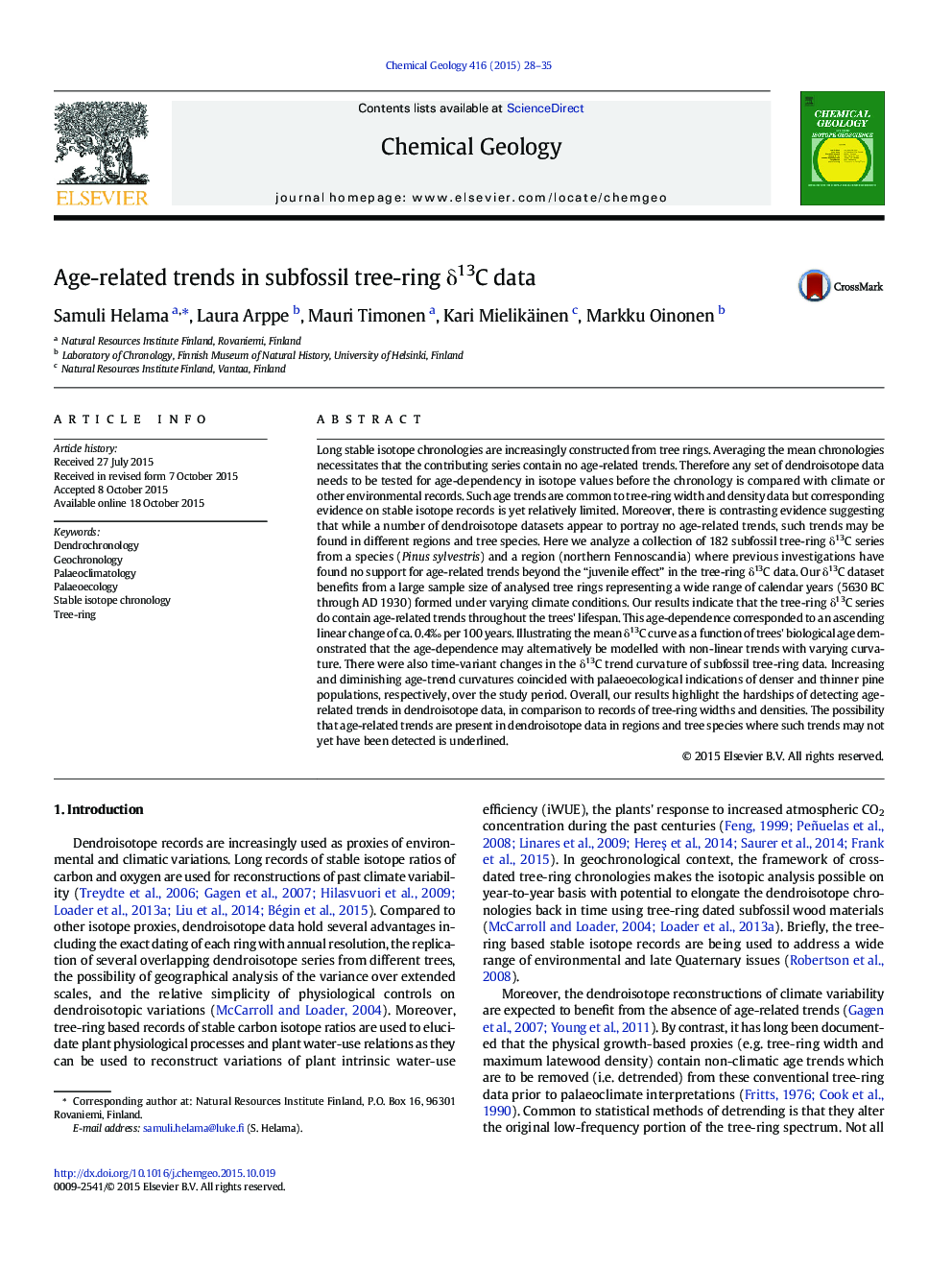| Article ID | Journal | Published Year | Pages | File Type |
|---|---|---|---|---|
| 4698439 | Chemical Geology | 2015 | 8 Pages |
•We produce a dataset of 182 subfossil tree-ring δ13C series.•We examine age-dependency in the mid- and late Holocene isotope values.•Subfossil δ13C series contain age-related trends throughout the trees' lifespan.•Variations in population density influence the δ13C trend curvature through time.•Our results highlight the possibility of age-related trends in δ13C elsewhere.
Long stable isotope chronologies are increasingly constructed from tree rings. Averaging the mean chronologies necessitates that the contributing series contain no age-related trends. Therefore any set of dendroisotope data needs to be tested for age-dependency in isotope values before the chronology is compared with climate or other environmental records. Such age trends are common to tree-ring width and density data but corresponding evidence on stable isotope records is yet relatively limited. Moreover, there is contrasting evidence suggesting that while a number of dendroisotope datasets appear to portray no age-related trends, such trends may be found in different regions and tree species. Here we analyze a collection of 182 subfossil tree-ring δ13C series from a species (Pinus sylvestris) and a region (northern Fennoscandia) where previous investigations have found no support for age-related trends beyond the “juvenile effect” in the tree-ring δ13C data. Our δ13C dataset benefits from a large sample size of analysed tree rings representing a wide range of calendar years (5630 BC through AD 1930) formed under varying climate conditions. Our results indicate that the tree-ring δ13C series do contain age-related trends throughout the trees' lifespan. This age-dependence corresponded to an ascending linear change of ca. 0.4‰ per 100 years. Illustrating the mean δ13C curve as a function of trees' biological age demonstrated that the age-dependence may alternatively be modelled with non-linear trends with varying curvature. There were also time-variant changes in the δ13C trend curvature of subfossil tree-ring data. Increasing and diminishing age-trend curvatures coincided with palaeoecological indications of denser and thinner pine populations, respectively, over the study period. Overall, our results highlight the hardships of detecting age-related trends in dendroisotope data, in comparison to records of tree-ring widths and densities. The possibility that age-related trends are present in dendroisotope data in regions and tree species where such trends may not yet have been detected is underlined.
